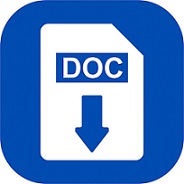Analysis of Time and Cost Acceleration with Crashing Method on Apartment Construction Project in Bekasi City
Abstract
Keywords
Full Text:
PDFReferences
I. Soeharto, Manajemen Proyek (Dari Konseptual Sampai Operasional), 2nd ed., vol. 1. Jakarta: Erlangga, 1999.
A. Husen, Manajemen Proyek, Revisi. Yogyakarta: Andi Offset, 2010.
E. Rita, N. Carlo, and D. Nandi, “Penyebab dan Dampak Keterlambatan Pekerjaan Jalan di Sumatera Barat Indonesia,” Jurnal Rekayasa, vol. 11, no. 01, pp. 27–37, 2021.
C. Z. Oktaviani, I. A. Majid, and R. Risdiawati, “Percepatan Waktu Pelaksanaan Pekerjaan Konstruksi dengan Metode CPM dan TCTO,” Inersia, Jurnal Teknik Sipil, vol. 11, no. 1, pp. 33–40, Sep. 2019, doi: 10.33369/ijts.11.1.33-40.
S. K. Intan, A. Muhyi, and N. M. Tengku, “Alternatif Percepatan Waktu dengan Penerapan Metode Time Cost Trade Off pada Proyek Pembangunan Jembatan (Studi Kasus: Proyek Pekerjaan Jembatan Rangka Baja Namploh Kec. Samalanga Kab. Bireuen, Aceh),” PORTAL Jurnal Teknik Sipil, vol. 10, no. 1, Apr. 2018.
A. Armalisa, D. Triana, D. Meassa, and M. Sari, “Metode Crashing Terhadap Penambahan Jam Kerja Optimum pada Proyek Konstruksi,” Jurnal Teknik Sipil, 2021.
R. Haryani, “Percepatan Waktu Proyek Pelaksanaan dengan Metode Crashing (Studi Kasus : Proyek Pembangunan Lapangan Indoor dan Out Door Sport Tangerang),” Bandung, 2022.
A. Ridwan, “Analisis Percepatan Proyek Menggunakan Metode Crashing Dengan Penambahan Jam Kerja Empat Jam dan Sistem Shift Kerja (Studi Kasus : Proyek Pembangunan Gedung RSUB Malang),” Jurnal Aplikasi Pelayaran dan Kepelabuhanan, vol. 11, no. 1, pp. 35–53, Sep. 2020, doi: 10.30649/japk.v11i1.61.
W. I. Ervianto, Manajemen Proyek Konstruksi, Revisi. Yogyakarta: Andi, 2002.
I. Widiasanti and Lenggogeni, Manajemen Konstruksi, 1st ed. Jakarta: PT Remaja Rosdakarya, 2013.
Project Management Institute, A Guide to the Project Management Body of Knowledge, 3rd ed. Newtown Square: Project Management Institute, 2004.
N. Saputra, E. Handayani, and A. Dwiretnani, “Analisa Penjadwalan Proyek dengan Metode Critical Path Method (CPM) Studi Kasus Pembangunan Gedung Rawat Inap RSUD Abdul Manap Kota Jambi,” Jurnal Talenta Sipil, vol. 4, no. 1, p. 44, Feb. 2021, doi: 10.33087/talentasipil.v4i1.48.
I. Nukuhaly and R. Serang, “Analysis of Project Acceleration with Crashing Method on the Rehability and Renovation Project Work of Iain Ambon Library,” International Journal of Advanced Engineering Research and Science, vol. 9, no. 4, pp. 319–331, 2022, doi: 10.22161/ijaers.94.37.
M. Fauza and N. Kartika, “Analisis Pengendalian Proyek Menggunakan Kurva-S dan Metode Earned Value pada Proyek Pembangunan Trotoar di Ruas Jalan Cisaat Kecamatan Cisaat Kabupaten Sukabumi,” Jurnal Ilmiah SANTIKA, vol. 10, no. 1, pp. 37–48, 2020.
B. Santosa, Manajemen Proyek Konsep & Implementasi, 1st ed. Yogyakarta: Graha Ilmu, 2009.
I. Khaidir, S. Ayu, M. Dwi, and P. Andriani, “Implementasi Metode Precedence Diagram Method (PDM) Dalam Pengendalian Proyek Konstruksi,” Jurnal Rekayasa, vol. 12, no. 02, pp. 175–182, 2022.
R. Yanita, I. F. Ningrum, and K. Mochtar, “Manfaat Penerapan Metode AON (Activity On Node) untuk Penjadwalan Proyek Bangunan Bertingkat Tinggi (Benefits of Implementing AON (Activity On Node) Method for Scheduling High-rise Building Project ),” Jurnal Ilmu Pengetahuan dan Teknologi (IPTEK), vol. 4, no. 2, Aug. 2020, doi: https://doi.org/10.31543/jii.v4i2.165.
Sugiyanto, Manajemen Pengendalian proyek. Surabaya: Scopindo Media Pustaka, 2020.
Menteri Tenaga Kerja dan Transmigrasi Republik Indonesia, “Keputusan Menteri Tenaga Kerja dan Transmigrasi Republik Indonesia Nomor Kep.102 /MEN/VI/2004 Tentang Waktu Kerja Lembur dan Upah Kerja Lembur,” Jakarta, Jun. 2004.
R. Novianto, Suparno, Sutrisno, and A. Rahman, “Application Of Network Analysis Crashing Method In Evaluating The Schedule Of Naval Base Facility Development Project,” International Journal of ASRO, vol. 12, no. 1, pp. 153–159, 2021, doi: 10.37875/asro.v12i01.392.
P. M. Muchinsky, Psychology Applied to Work, 8th ed. Belmont: Thomson Wadsworth, 2006.
I. Soeharto, Manajemen Proyek (Dari Konseptual Sampai Operasional). Jakarta: Erlangga, 1997.
H. U. Q. Azki, “Optimasi Biaya dan Waktu Proyek dengan Penambahan Jam Kerja (Lembur) Dibandingkan dengan Penambahan Tenaga Kerja Menggunakan Metode Time Cost Trade Off pada Pekerjaan Jembatan Lemah Abang Kabupaten Sleman,” Yogyakarta, 2018. Accessed: Sep. 24, 2023. [Online]. Available: http://repository.umy.ac.id/handle/123456789/19834
Menteri Pekerjaan Umum dan Perumahan Rakyat Republik Indonesia, “Peraturan Menteri Pekerjaan Umum dan Perumahan Rakyat Republik Indonesia Nomor 1 Tahun 2022 Tentang Pedoman Penyusunan Perkiraan Biaya Pekerjaan Konstruksi Bidang Pekerjaan Umum dan Perumahan Rakyat,” Jakarta, Jan. 2022.
Wali Kota Bekasi, “Harga Satuan Pokok Kegiatan Pemerintah Kota Bekasi Tahun Anggaran 2022,” Bekasi, Jan. 2021.
DOI: http://dx.doi.org/10.36055/fondasi.v13i2.29034
Refbacks
- There are currently no refbacks.
FONDASI : JURNAL TEKNIK SIPIL HAS BEEN INDEXED BY
Fondasi: Jurnal Teknik Sipil by Jurusan Teknik Sipil UNTIRTA is licensed under a Creative Commons Attribution-ShareAlike 4.0 International License.






.jpg)


